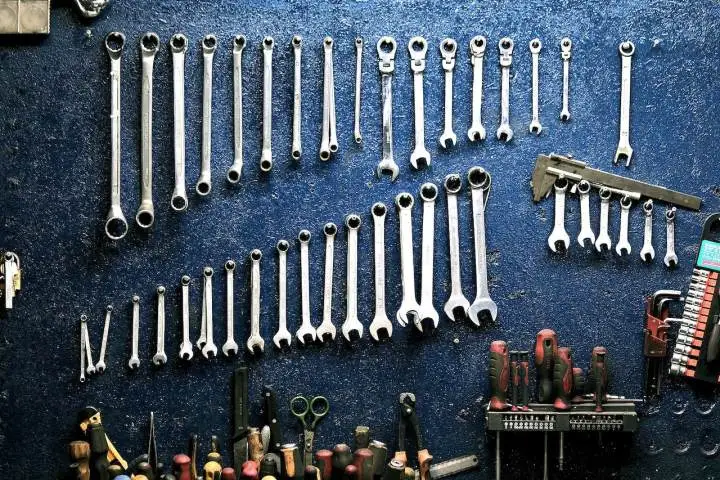
Cordless power tools are extremely popular among both professional contractors and amateur DIYers. Unlike their corded counterparts, cordless tools provide exceptional flexibility and ease of use without dealing with the hassle of dragging cables around. However, cordless tools – especially higher-end drills, saws, sanders, and more – also represent a significant investment. These instruments can easily fail prematurely without proper storage and regular maintenance or suffer permanent performance issues. By implementing basic best practices for storage and upkeep, users can keep their cordless power tools in top condition for maximum lifespan and return on investment.
Proper Storage
The storage location and protocols followed for cordless power tools between uses play a critical role in ensuring continued functionality. Cordless tools should always be stored in a clean, dry environment away from potential moisture exposure. Cool to moderate temperatures around 60°F to 80°F provide the ideal situation; long-term storage in extremely hot or cold conditions should be avoided. Before putting tools away, all dirt, dust, and debris accumulated from previous use should be blown out or wiped off to prevent any abrasive damage or clogging of sensitive motor components.
Most critical, cordless tool batteries should always be removed from the tool body itself during storage. Quality lithium-ion batteries hold an approximately 40-50% charge state for optimal longevity; fully draining or overcharging Li-ion packs will degrade their reliable lifespan much faster. Detached tool batteries are best kept in an organizing case alongside their respective instruments for quick access when work arises. Some tool cases or bags even provide specific, compartmentalized storage layouts to secure batteries and chargers separately. Investing in one of these dedicated carrying cases keeps everything conveniently in one place while simultaneously protecting delicate parts from the inevitable bumps and bangs tools receive between job sites.
Storing Cordless Tools at Home vs Garage
The controlled climate of an indoor home environment delivers more consistently moderate temperatures and lower humidity throughout the year. Avoiding temperature extremes prevents premature lithium-ion battery degradation. The lack of exposure to dust, debris, and potential moisture from a garage setting reduces abrasion issues or shortens electrical contacts over time. However, finding adequate secure storage space for bulky tools while keeping them out from underfoot inside living areas proves difficult for some.
Alternatively, storing cordless tools out in the garage allows convenient access right alongside workshop workbenches or project vehicles. Garage tool organizers and parts cabinets with locks abound for neatly arranging all necessary gear. However, garage conditions also tend to suffer much wider humidity and temperature swings compared to the home interior. Battery performance relies on moderate climate exposure as much as possible.
Carefully sealed heavy-duty job site tool bags help protect against dust or moisture penetration. During the hottest summer and coldest winter stretches, owners might consider temporarily moving tools into a temperate basement for days or weeks at a time to preserve long-term function. Despite minor seasonal hassles, the convenience factor generally makes garage storage the ideal choice for serious DIYers.
Regular Maintenance
Beyond just storage habits, performing routine maintenance inspections and upkeep dramatically extends the usable service life of cordless power tools as well as ensuring they operate at peak performance in each application. Before getting started on any job, users should conduct a thorough visual check of the entire tool, including body, battery, chuck, blade, and any auxiliary handles or accessories used for telltale signs of damage from previous rough treatment. Carefully inspecting battery terminals, electrical contacts, and ventilation ports for accumulated dust goes a long way toward avoiding nasty failures from dirt buildup.
While exact recommendations vary across brands and models, most manufacturers provide specific maintenance schedules and procedures in each tool’s manual. Common tasks like occasional blade sharpening or lubrication of drill chucks and saw arbors ensure smooth, efficient cutting for years without excessive wear. Users would be wise to fully understand and closely adhere to each tool maker’s particular specifications. At a minimum, expect to periodically blow out and wipe down the interior motor and exterior ventilation ports on tools after extended use to prevent overheating issues. Higher-intensity users in construction industries may require full professional tune-ups or bearing/brush replacements annually to keep heavy-duty tools humming along.
Benefits of Proper Care
Closely monitoring storage conditions and properly maintaining cordless power tools requires some extra diligence compared to grabbing tools without care and haphazardly throwing them back on the shelf when finished. However, committing to careful handling provides immense long-term benefits beyond just preserving the initial purchase investment. Well-organized instruments kept in top shape save huge headaches by avoiding abrupt, untimely failures in the middle of big jobs – exactly when replacement or repair becomes incredibly inconvenient. As an added advantage, properly stored tools in like-new operational conditions retain significantly higher resale value in the secondhand marketplace when the time eventually comes to upgrade.
Carefully maintained power tools operate safer by minimizing dangerous component failures or lock-ups. Dedicated DIYers owe it to their wallets and personal safety to proactively maintain their high-power cutting implements rather than waiting for catastrophic issues to arise when forcefully applied to a workpiece. Taking basic preventative measures gives tool owners peace of mind that their trusty implements will reliably and securely perform countless jobs over their intended lifespan.
Conclusion
As with many household items, the regular upkeep actions required for proper storage and maintenance with cordless power tools represent only a minor additional effort compared to the substantial benefits provided in return. By simply committing to proven best practices, users ensure the longest possible lifetime of service from their investments. Cordless tools kept in top shape perform better, last longer between charges, and operate safer during every application over the years. Just a small amount of diligent care pays continuous dividends down the road for any avid DIYer or professional who relies on cordless power tool performance.
We hope you found this blog post on Storing and Maintenance of Cordless Tools, useful. Be sure to check out our post on How to Store Your Belongings – Moving & Storage for more great tips!
Have Experience in the Moving Industry? Want an Additional Income Stream? Work With All Around Moving!
Partner with us and we’ll help you make money. Click here to learn more.





